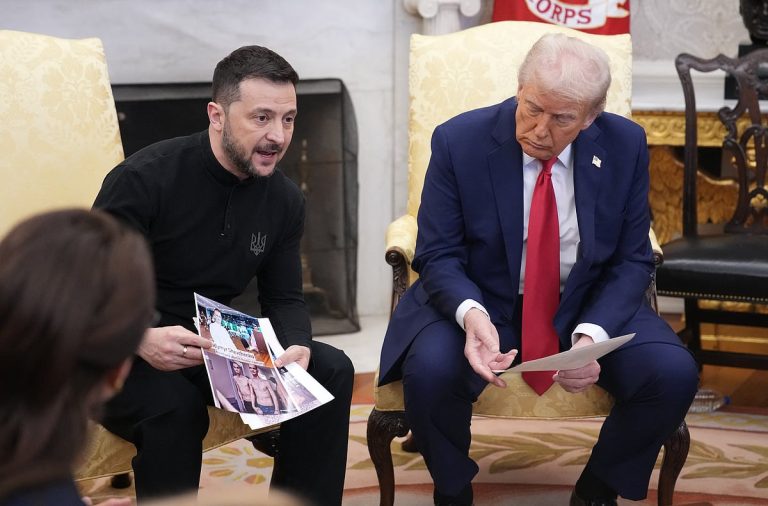South Korea Gets U.S. Approval for Nuclear Submarine Project
In a significant development for military cooperation, the United States has granted South Korea the green light to construct nuclear-powered submarines. This announcement was made by President Donald Trump during his visit to Gyeongju, where he met with South Korean President Lee Jae Myung. The decision reflects the strengthening military alliance between the two nations amid rising tensions in the region.
Details of the Agreement
During his visit, Trump emphasized the importance of modernizing South Korea’s naval capabilities. He stated, “Our Military Alliance is stronger than ever before, and I have given them approval to build a Nuclear Powered Submarine.” This move is seen as a strategic response to the growing submarine capabilities of North Korea and China.
The construction of the submarines will take place in the United States, specifically at the Philadelphia Shipyards. Trump highlighted this as a boost for American shipbuilding, declaring, “Shipbuilding in our Country will soon be making a BIG COMEBACK.”
Context of the Decision
The approval comes after South Korean President Lee expressed the need for advanced military technology to keep pace with regional threats. Prior to the meeting, Lee had requested U.S. approval for nuclear fuel necessary for the submarines. He stated, “If the president would make a decision to allow us to receive fuel for nuclear-powered submarines, we would appreciate it.”
This decision is particularly relevant given North Korea’s recent display of its own nuclear-powered submarine under construction, which has raised concerns in South Korea and the U.S.
Economic Implications
In addition to military cooperation, the two leaders discussed economic agreements. Trump announced that South Korea would invest $350 billion to reduce tariffs imposed by the U.S. This includes a commitment to purchase oil and gas from the U.S. in substantial quantities, alongside investments from South Korean companies expected to exceed $600 billion.
South Korean officials confirmed that the details of the trade agreement were finalized during the meeting. The framework established earlier in July had already reduced tariffs to 15%, but the automobile sector remained subject to a 25% tariff. The new agreement aims to address these discrepancies.
Investment Breakdown
According to Kim Yong-beom, South Korea’s presidential chief of staff for policy, the $350 billion investment will be structured as follows: $200 billion will be paid in cash over several years, with a yearly limit of $20 billion, while $150 billion will come through shipbuilding cooperation led by South Korean firms. This phased approach is designed to mitigate potential impacts on South Korea’s foreign-exchange market.
FAQs
What prompted South Korea to seek nuclear-powered submarines?
South Korea aims to enhance its naval capabilities in response to the growing military threats posed by North Korea and China, particularly their advancements in submarine technology.
Where will the nuclear-powered submarines be built?
The submarines will be constructed in the United States, specifically at the Philadelphia Shipyards, as part of a broader military cooperation agreement between the U.S. and South Korea.
What are the economic terms of the agreement between the U.S. and South Korea?
South Korea has agreed to invest $350 billion to lower tariffs, which includes purchasing U.S. oil and gas and significant investments from South Korean companies, totaling over $600 billion.
Conclusion
The approval for South Korea to build nuclear-powered submarines marks a pivotal moment in U.S.-South Korea relations, reflecting both military and economic cooperation. As the two nations move forward with these agreements, the focus will be on enhancing security in the region while managing the economic implications of their partnership.
The decision to allow South Korea to develop nuclear-powered submarines underscores a broader shift in defense strategies among U.S. allies in the Asia-Pacific region. As nations face increasing pressure from North Korea’s military advancements and China’s assertive posture, the enhancement of naval capabilities is viewed as essential for maintaining regional stability. This move may also encourage other countries in the region to reevaluate their own defense policies and military investments.
Furthermore, the collaboration on nuclear submarine construction may pave the way for deeper technological exchanges between the U.S. and South Korea. Such partnerships could lead to advancements in various defense sectors, including cybersecurity and missile defense systems, thereby strengthening the overall military readiness of both nations. As the geopolitical landscape continues to evolve, the implications of this agreement will likely extend beyond immediate military enhancements to influence broader security dynamics in the Asia-Pacific region.
Also Read:
Trump and Xi Jinping Discuss Trade and Security in Korea







